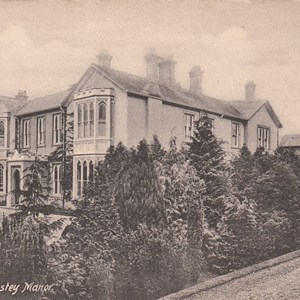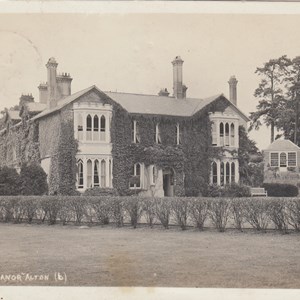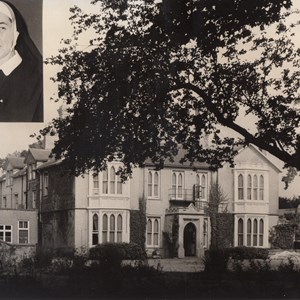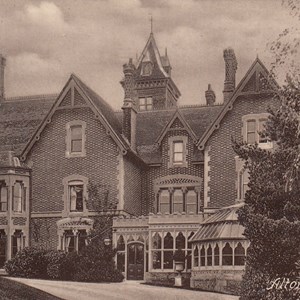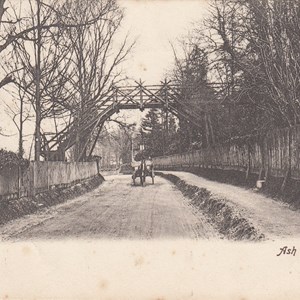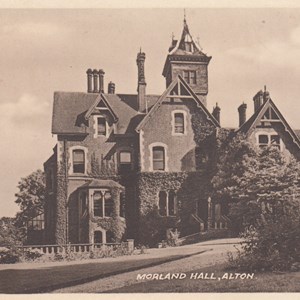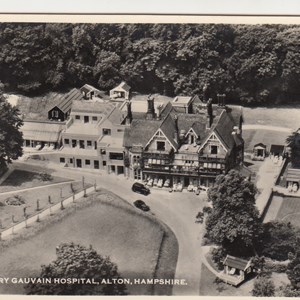Alton's Big Houses
I have used the title of a chapter in The Story of Alton to bring together images of the 'Manor' houses, grounds, and people who lived or worked in or on them.
Anstey Manor
Built in the late 19th century by Gerald Hall, son of Henry Hall, owner of one of Anstey's breweries, there appears to be very little documented history of this building.
Dorothy Hall (Gerald's daughter) volunteered with the British Red Cross during the First World War. Her service card records her length of service from July 1916 until February 1919 and lists her permanent address as Anstey Manor.
The manor house was occupied by Canadian soldiers during the Second World War; I presume it had been requisitioned? After the war, the house and lands were still owned by the Hall family but were put up for sale, with the Town Council and the Alton Convent School both interested. Rather than bid against each other, a plan was drawn up, giving the school the manor house and some land around it, with the council having the rest of the land.
The school collected the keys on January 1st, 1946, and set about getting them ready for students to attend on February 3rd.
Ashdell
Ashdell was built for Frederick Crowley by J.H.& E. Dyer in the early 1870s. At that time, a footpath ran through the property in front of the house; this was diverted around the back of the house and down a newly built flight of steps, which are still there today. A rustic bridge was also built to allow easy access to the Kings Pond area for the family; the bridge was removed shortly after the Great War (First World War).
Following the death of Frederick Crowley in 1910, the house was sold and renamed Moorland Hall. By 1925, the house had a new owner, Sir Henry Gauvain, who was the Medical Superintendent of the Lord Mayor Treloar Hospital. Between 1925 and his death in 1945, Sir Henry ran a private clinic at Moorland Hall.
The house came under the control of the NHS in the late 1940s and was renamed The Henry Gauvain Hospital; however, by the early 1960s, the building was deemed surplus to requirements, which led to the building being demolished in 1969 to make way for the Ashdell Park development.
You can still see the trees that would have lined the driveway leading to the house today; they stand on either side of Crowley Drive as you make your way along it from Ashdell Road.
